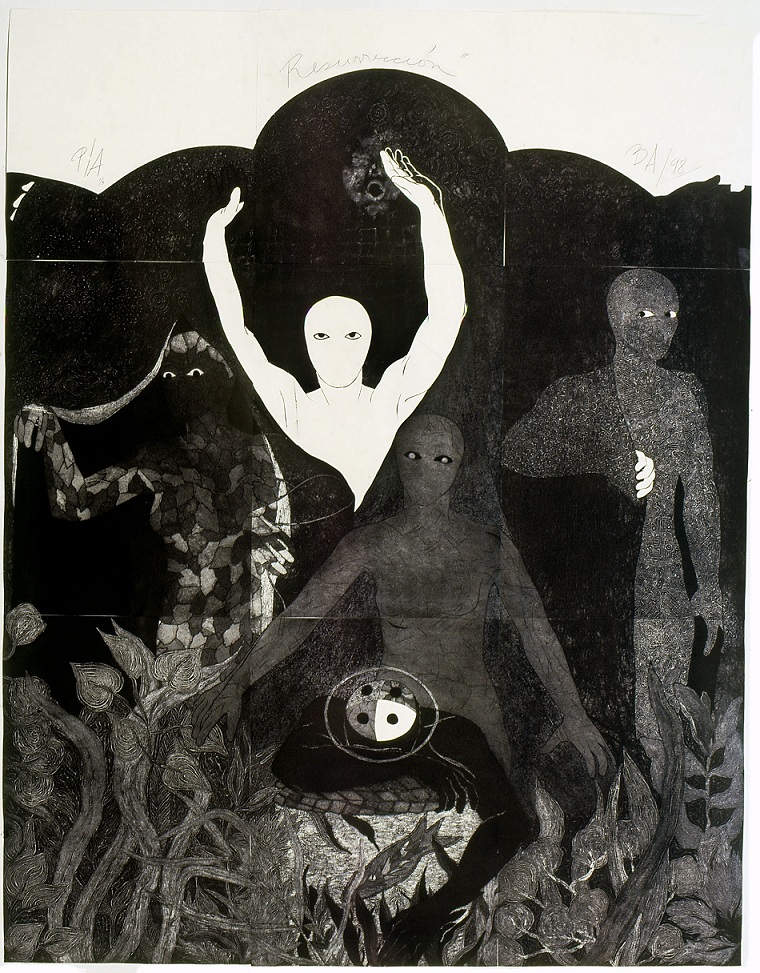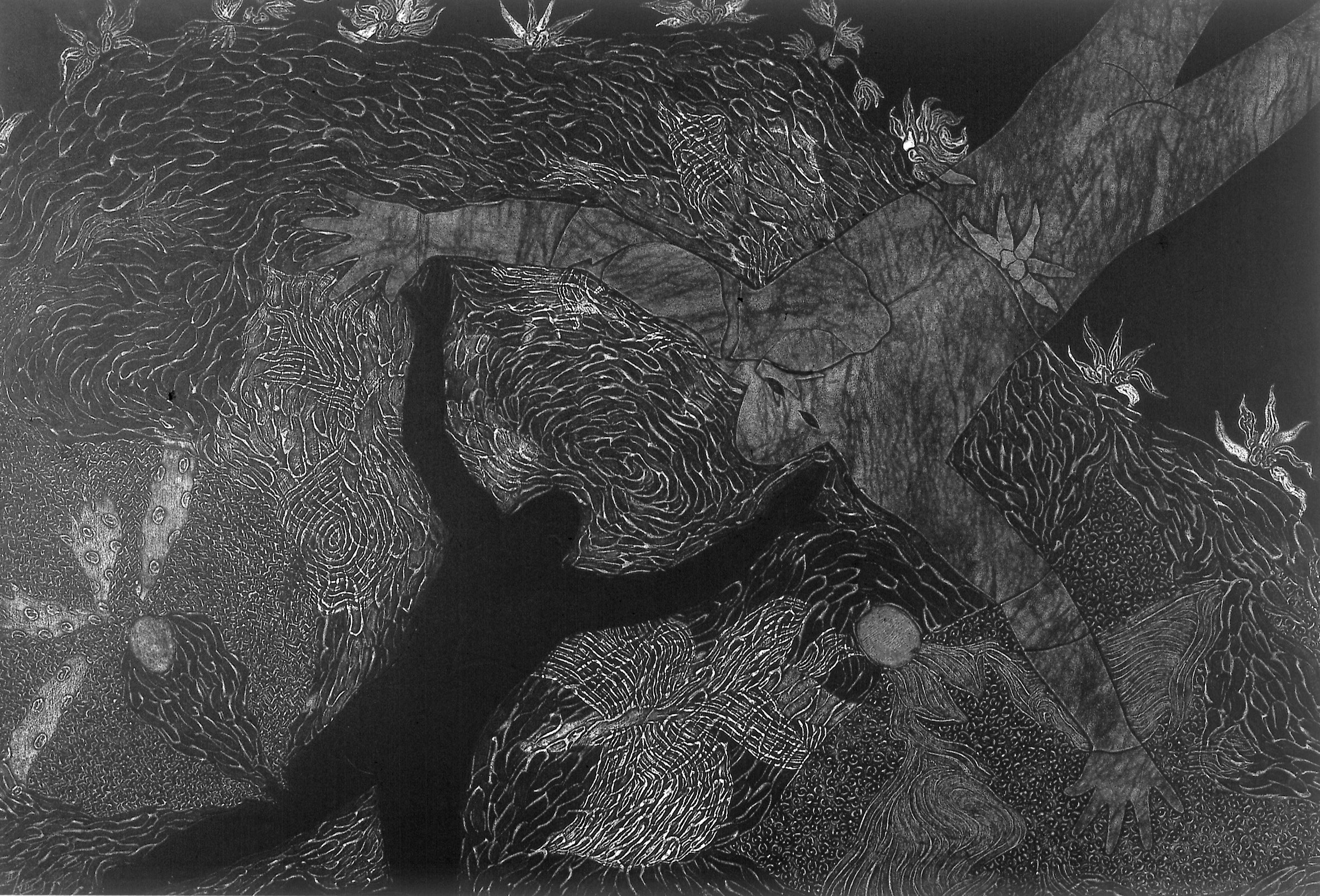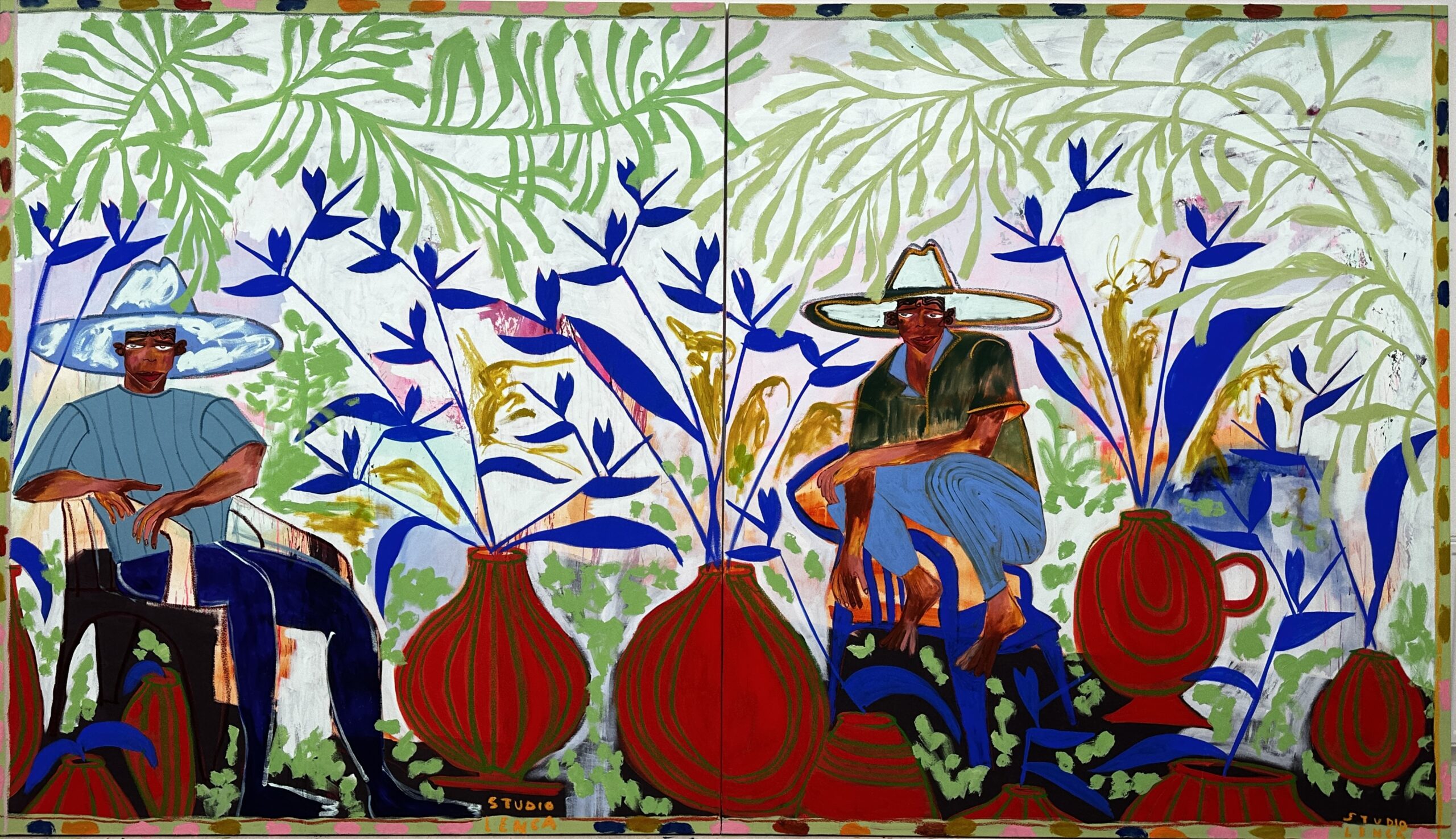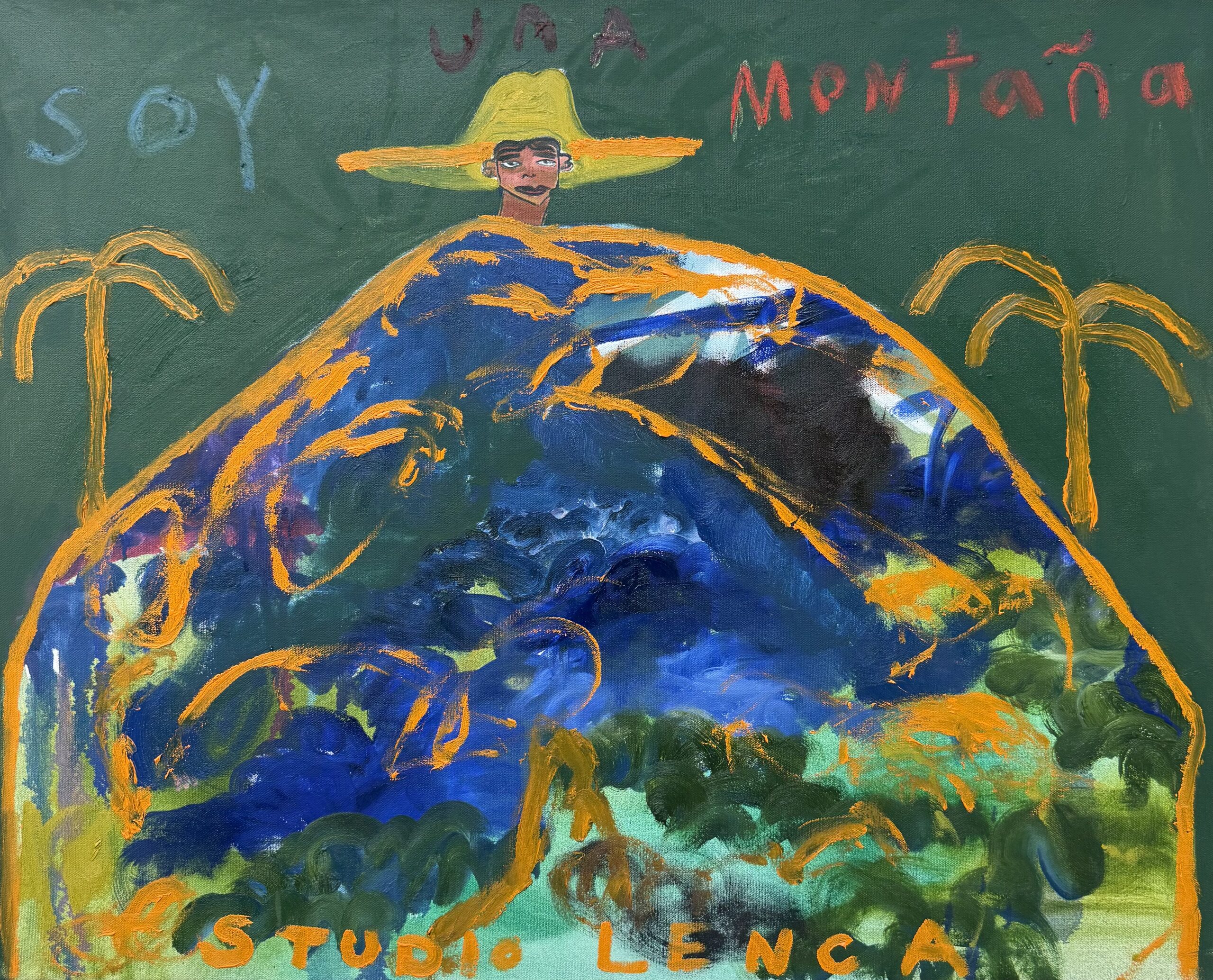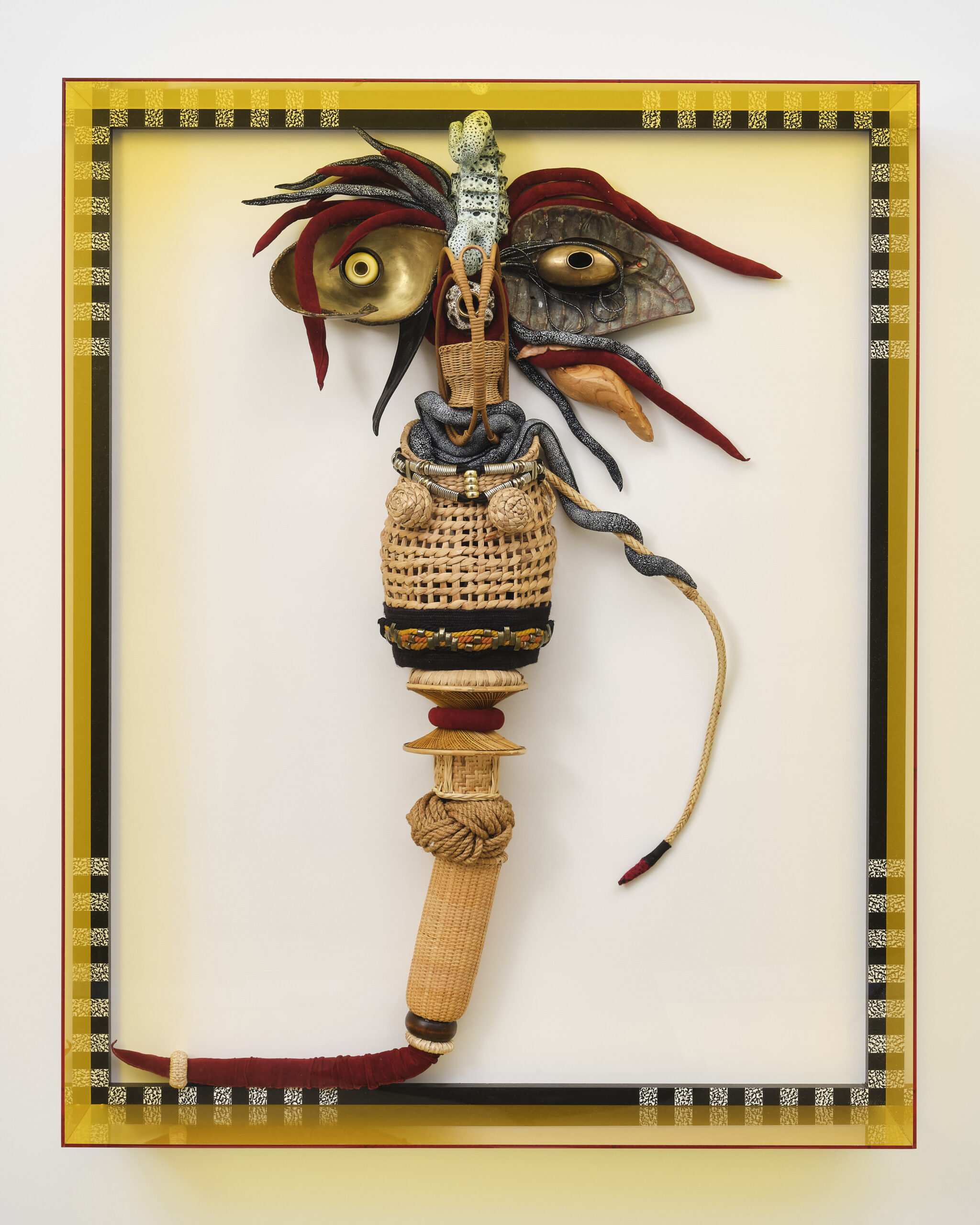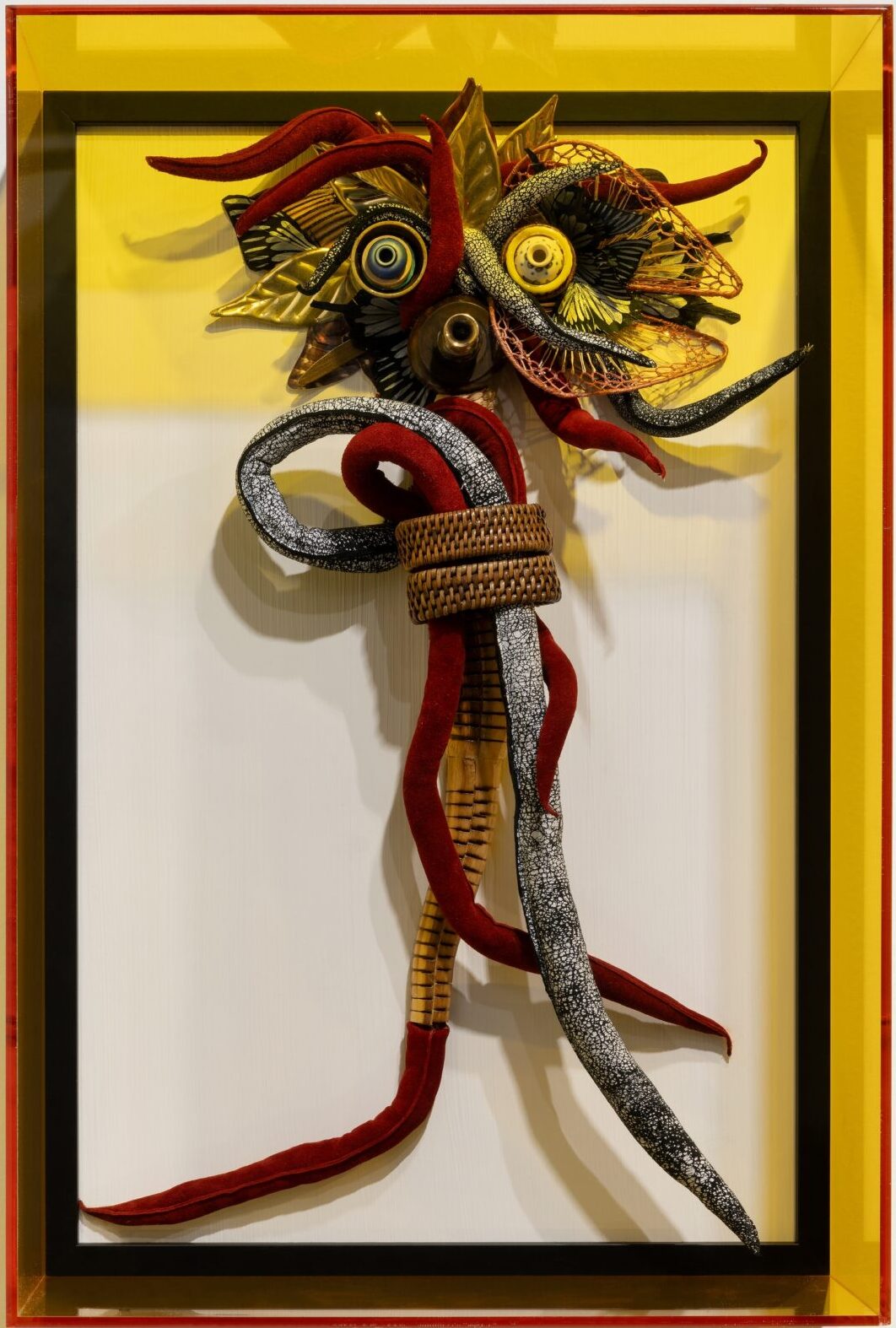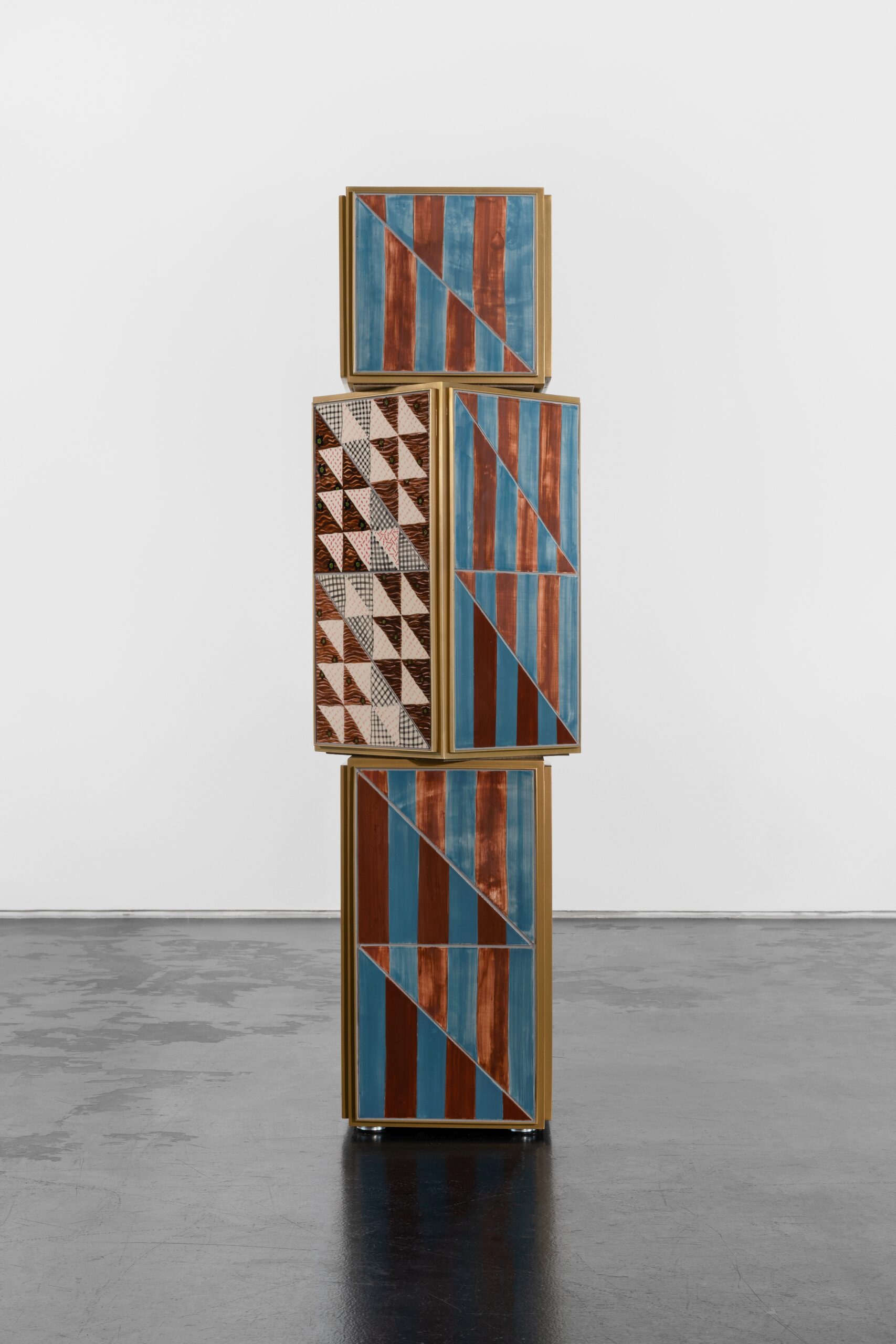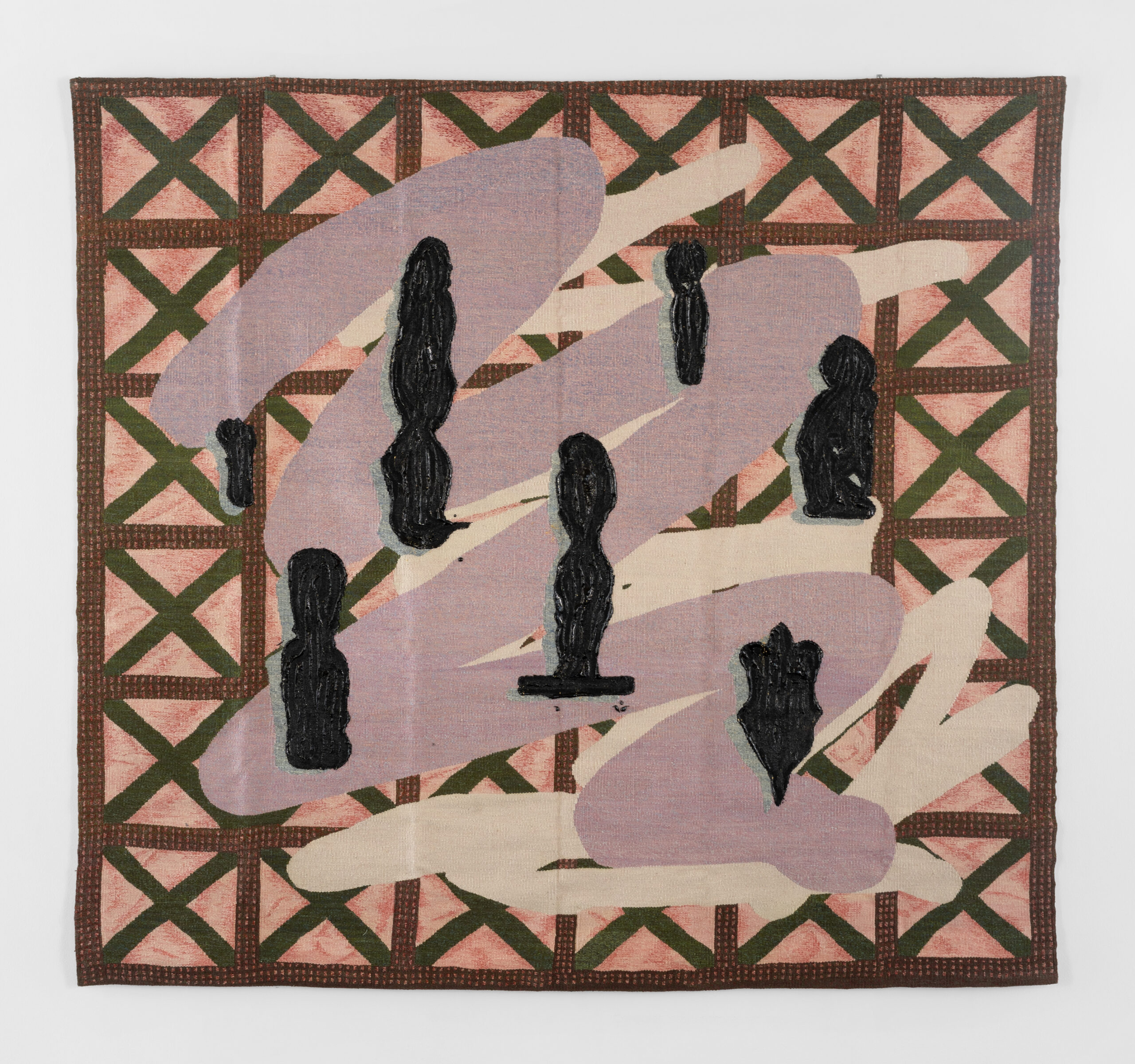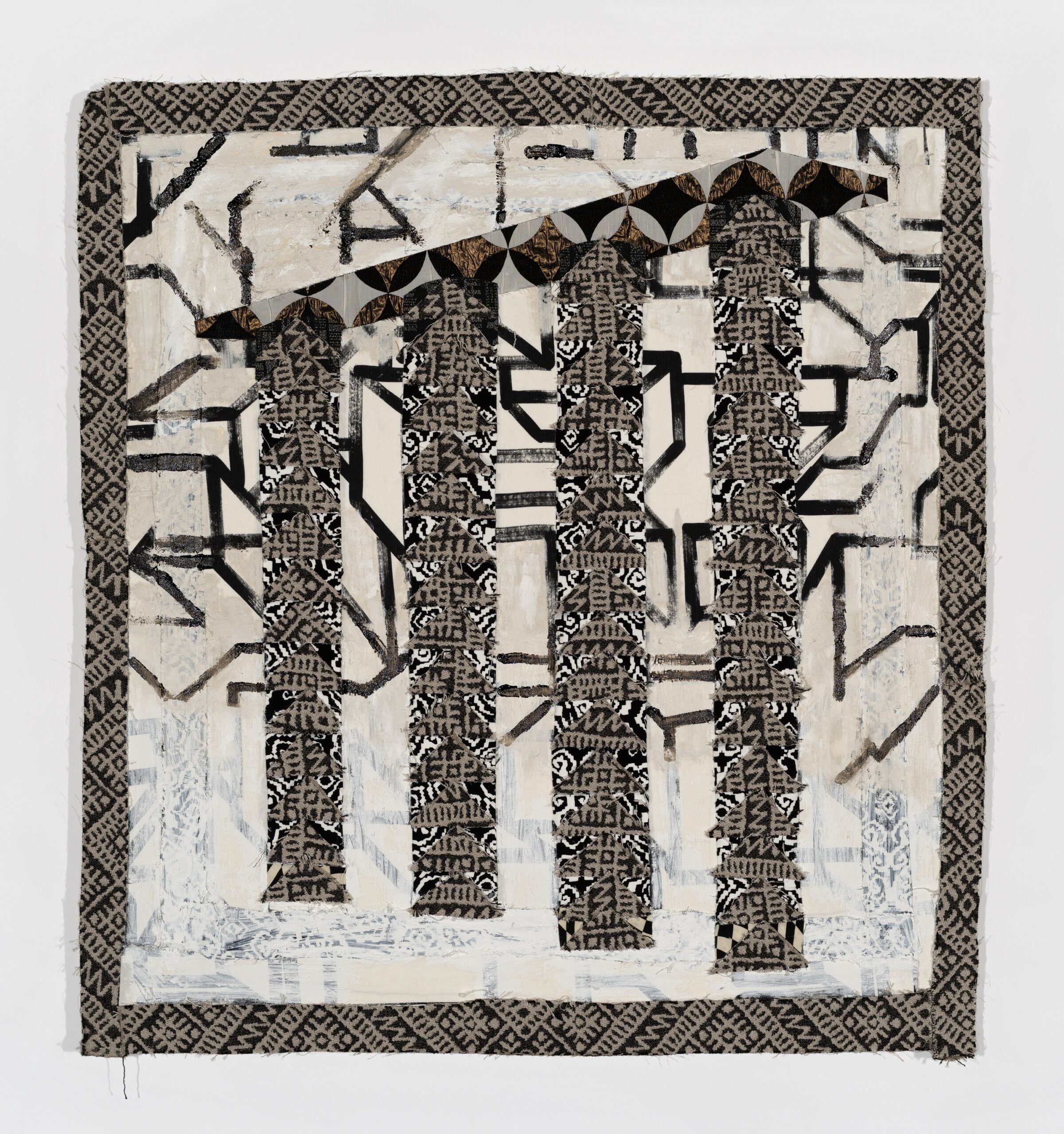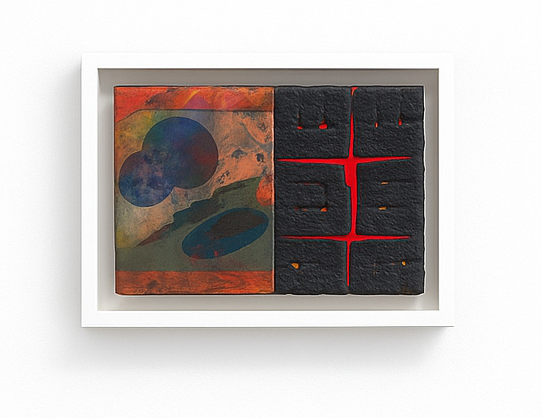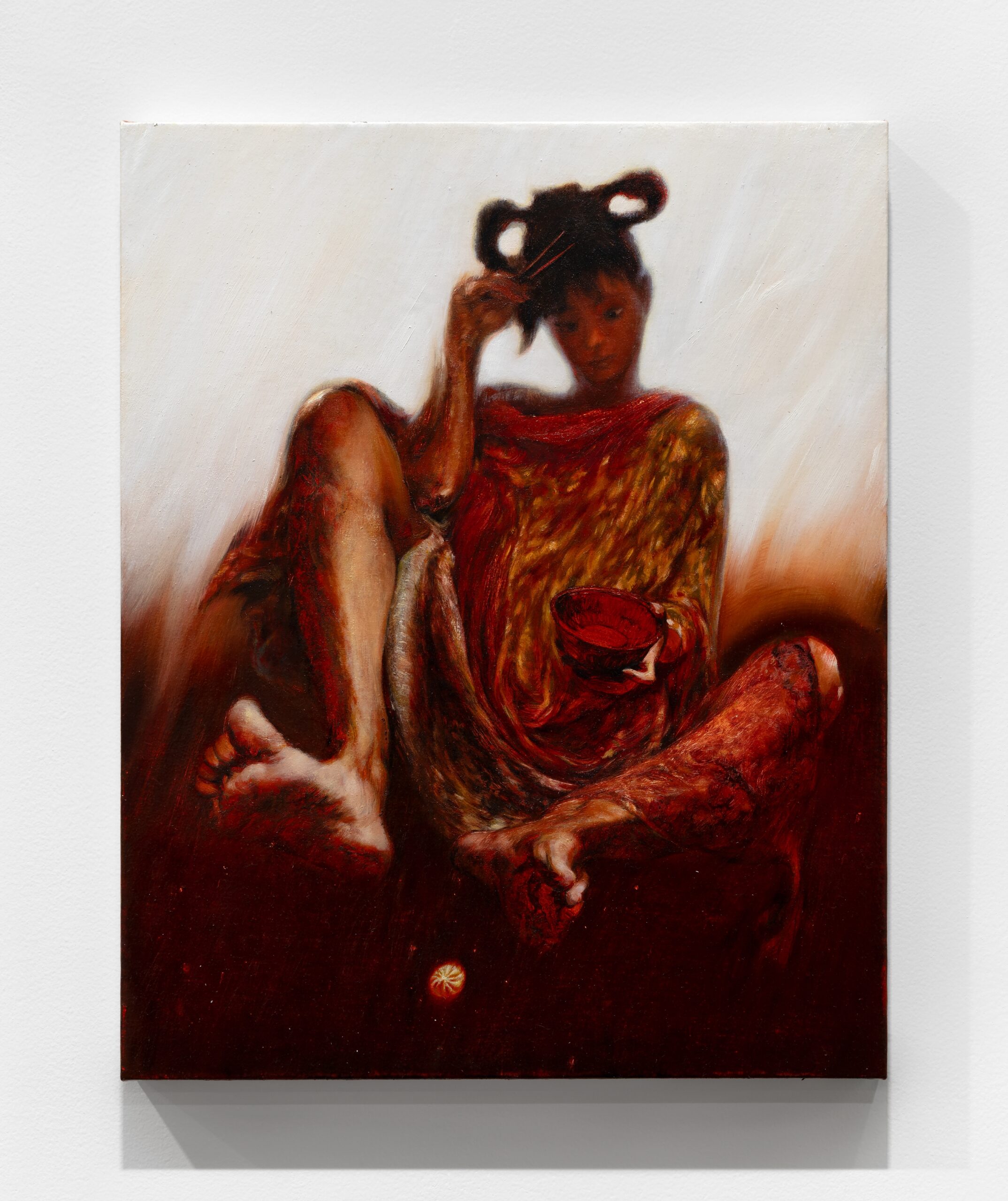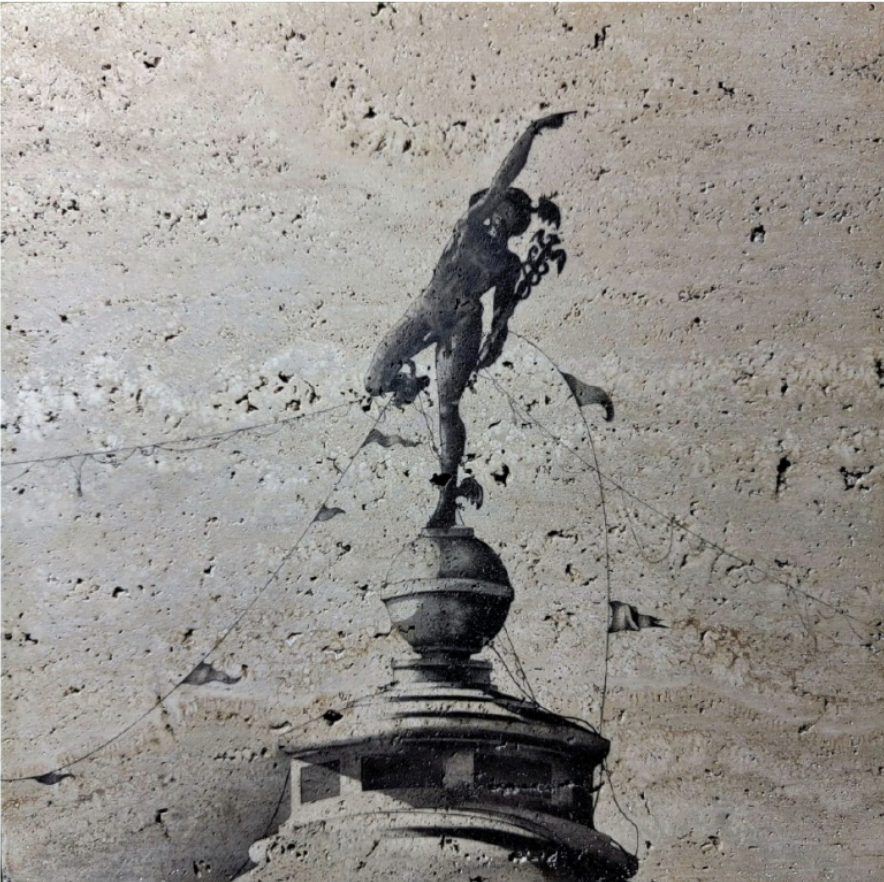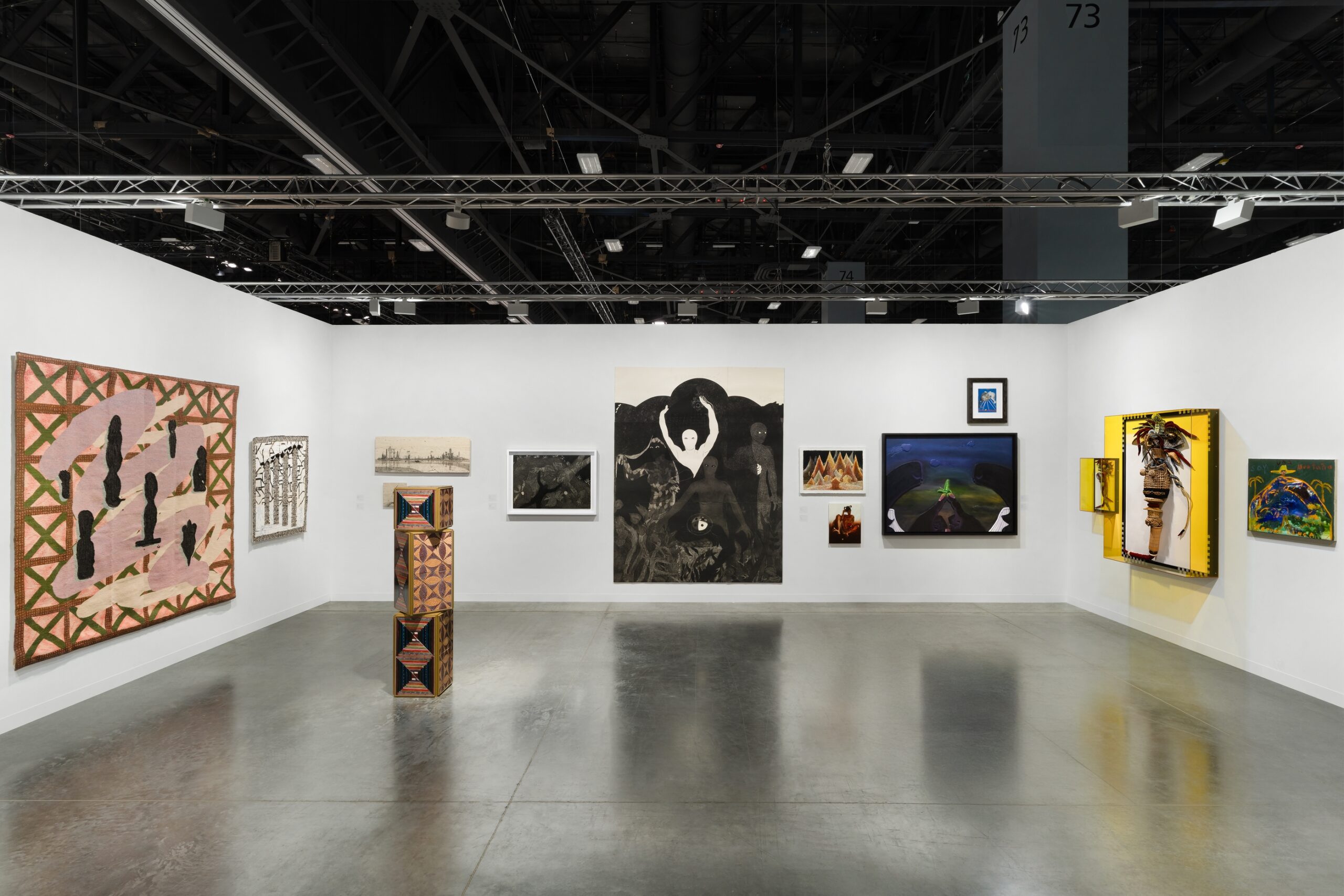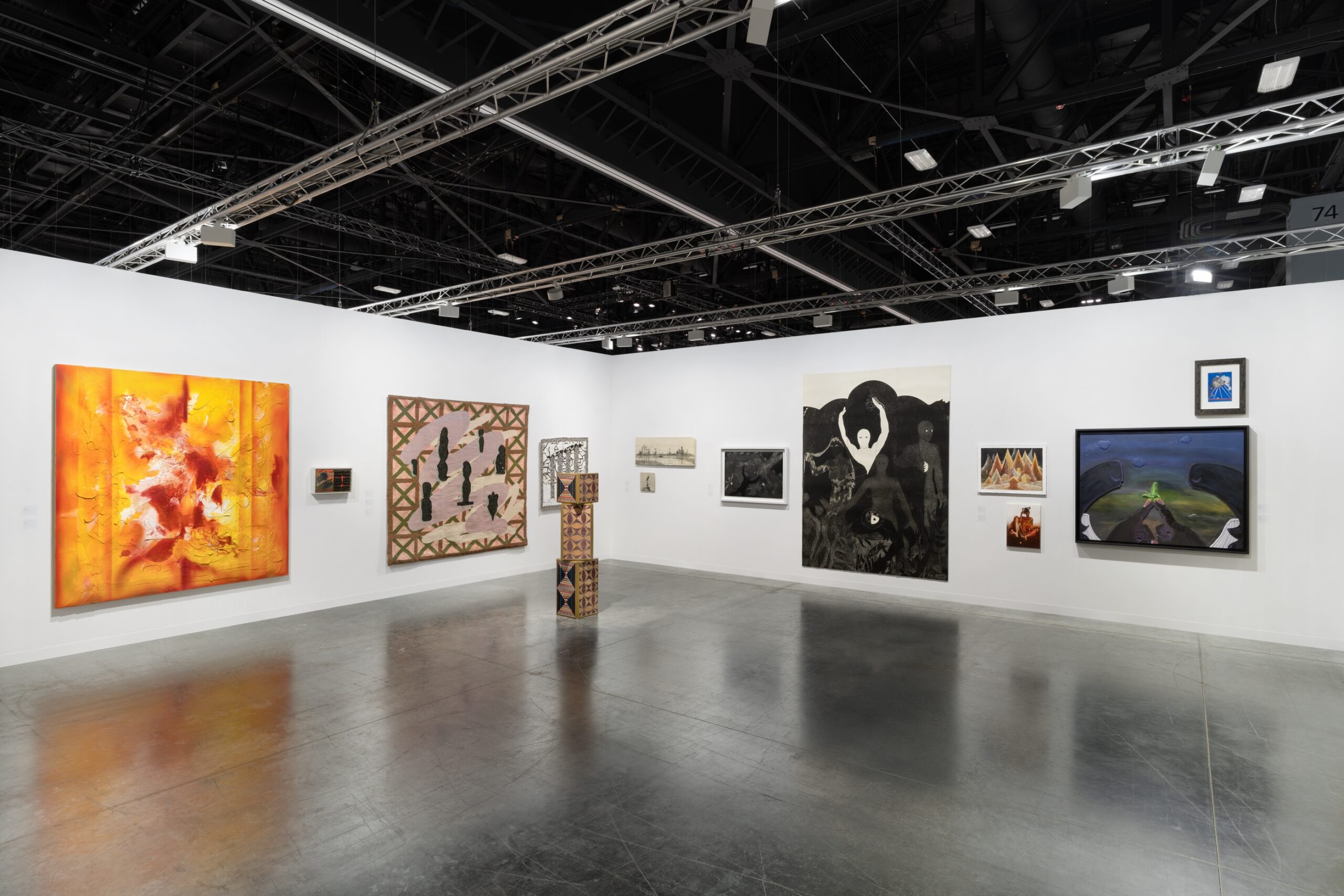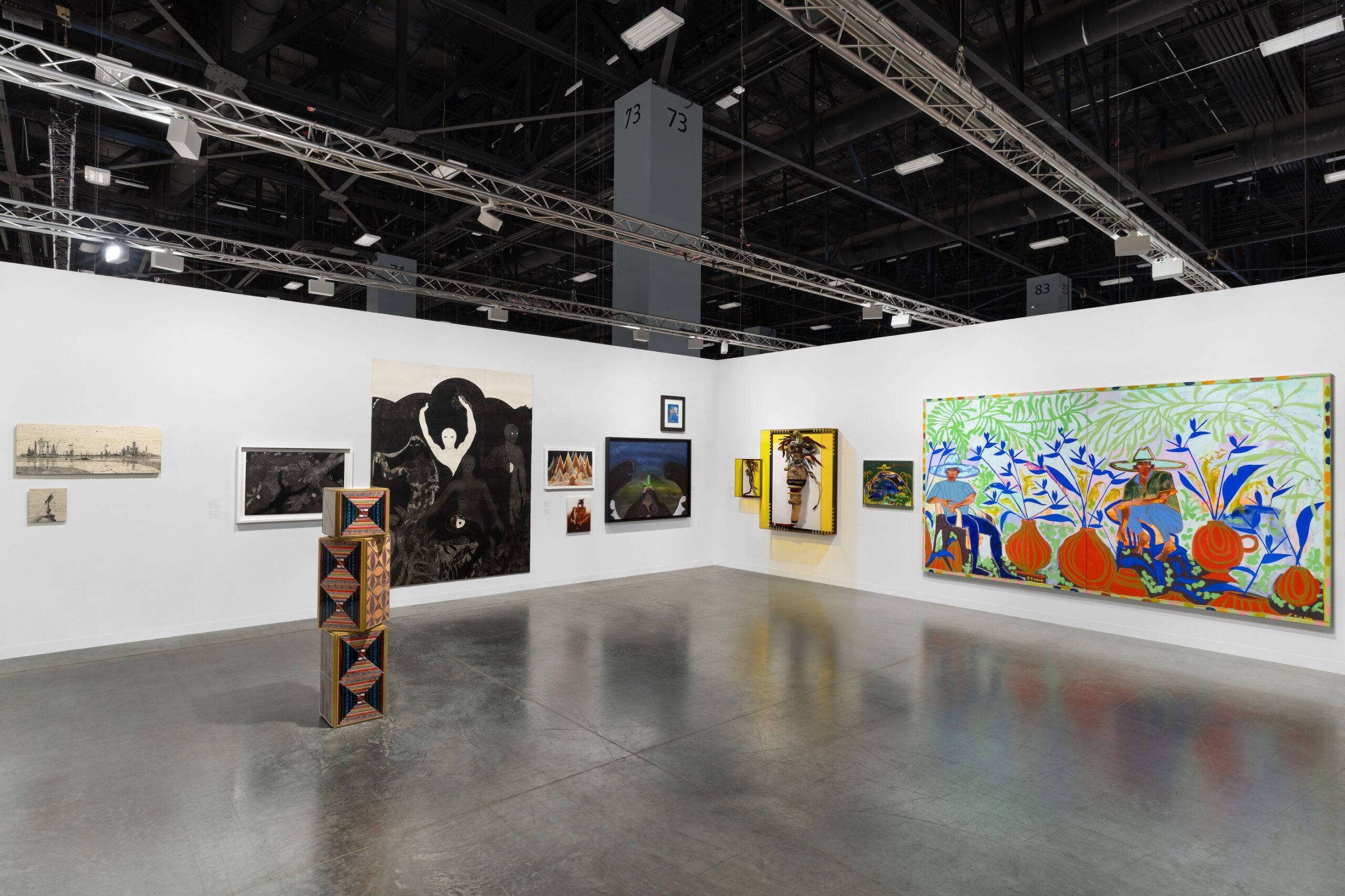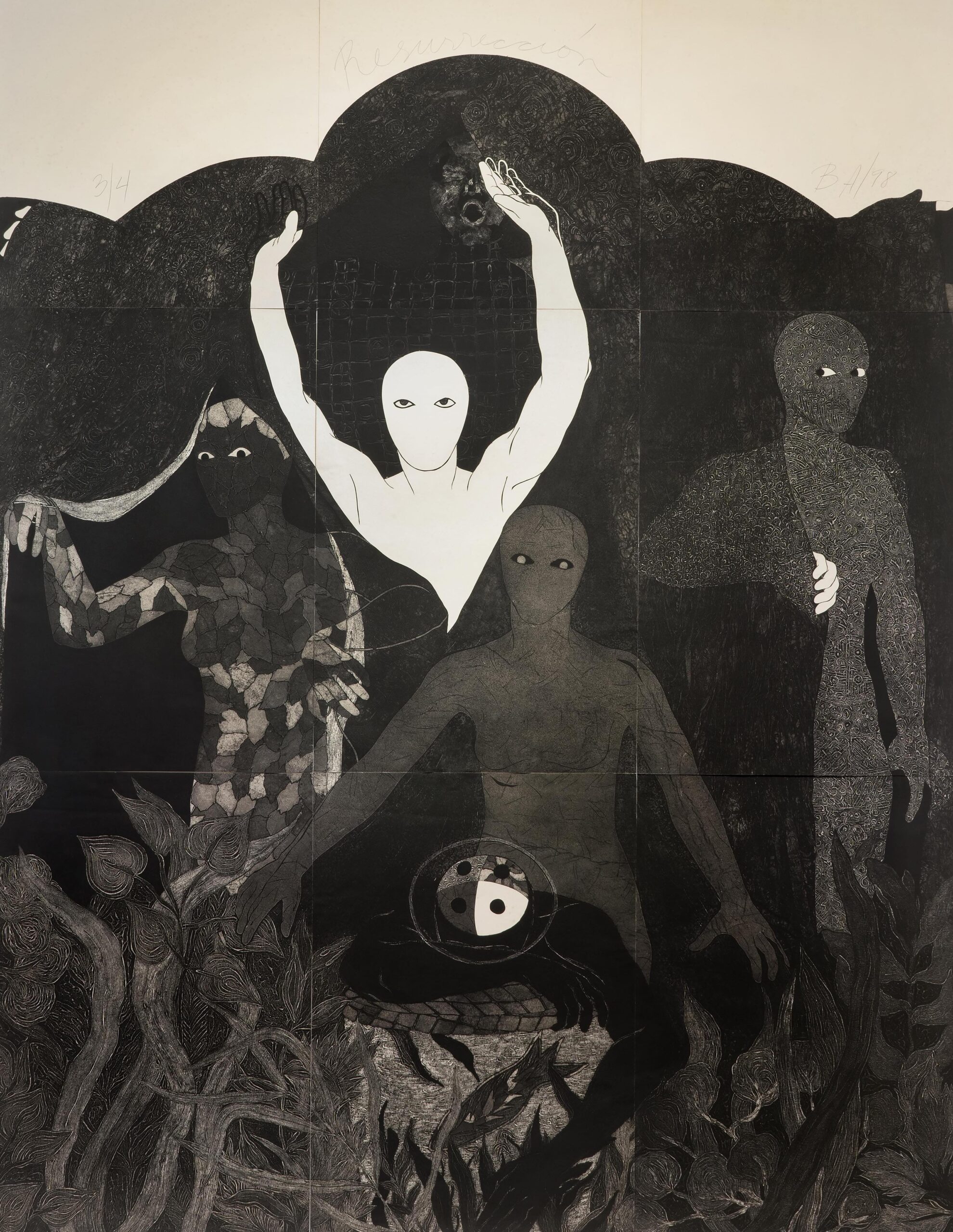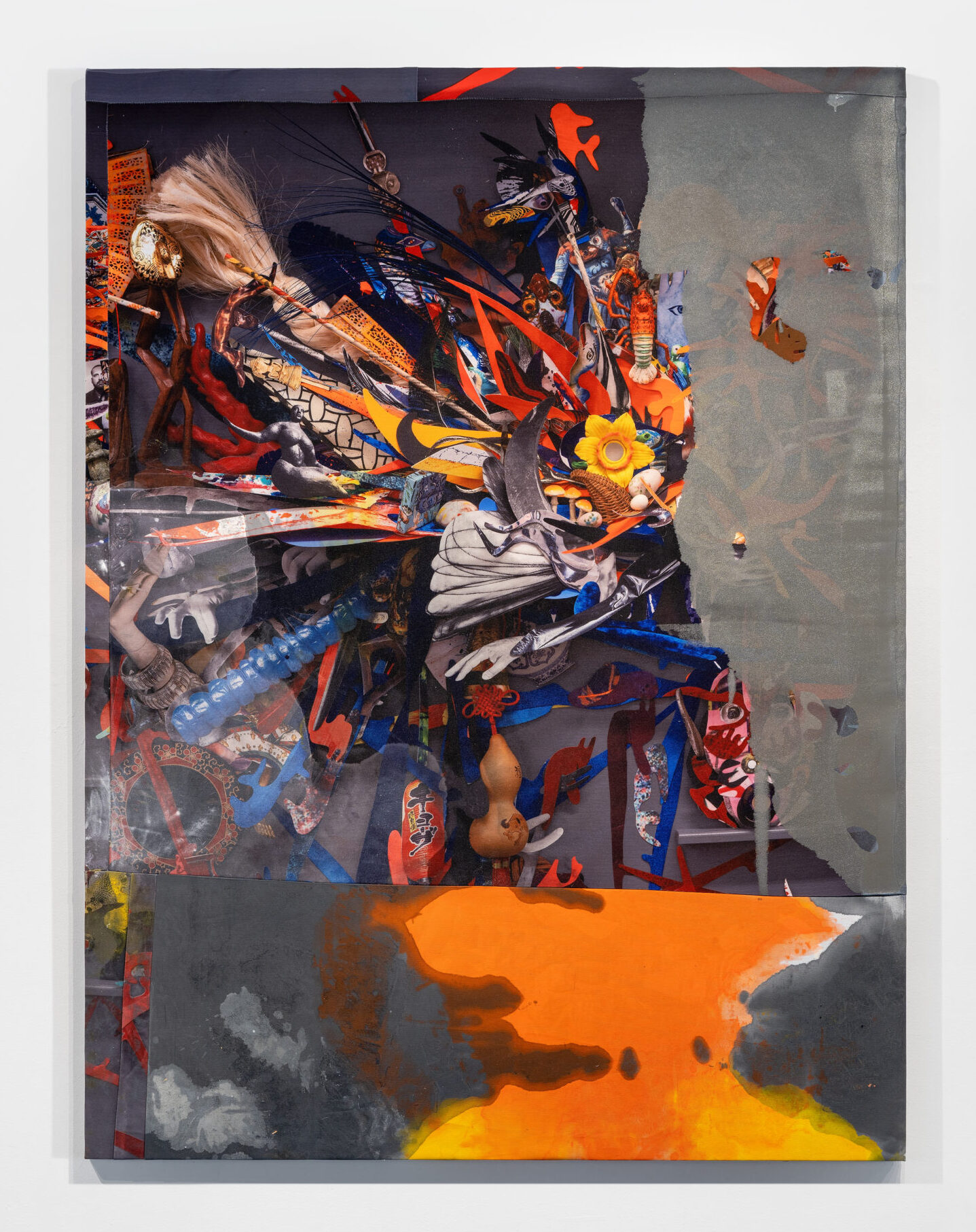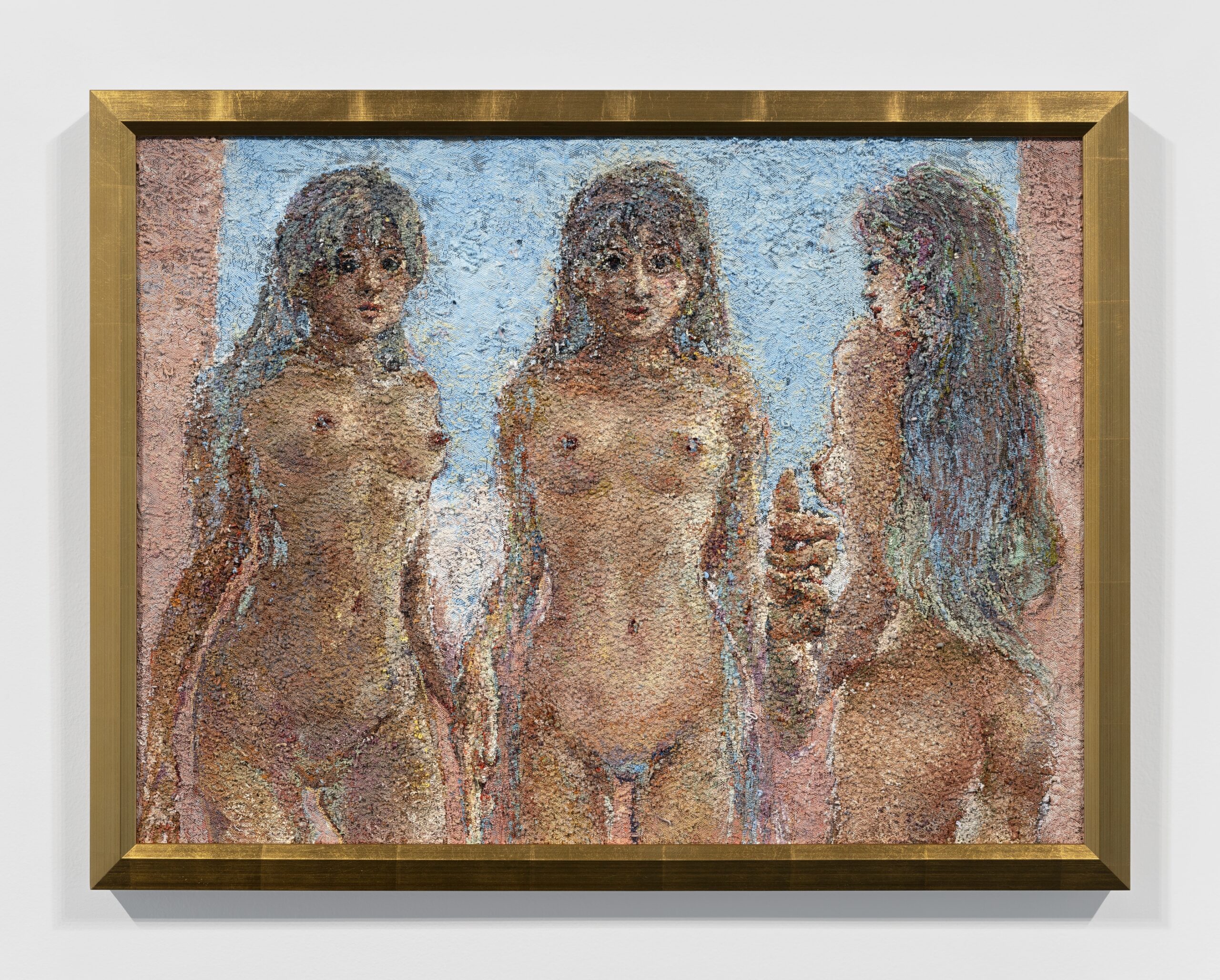Art Basel Miami Beach
December 5 - December 7, 2025
For the Galleries sector of Art Basel Miami Beach 2025, David Castillo (Booth H27) presents works in sculpture, painting, collagraphy, drawing, and assemblage by artists Belkis Ayón, Sanford Biggers, Pepe Mar, Glexis Novoa, Alexandria Smith, Studio Lenca, Su Su, and Vaughn Spann.
The presentation is organized around the concept of scale: a term that traverses architecture, mathematics, the body, economy, and systems of knowledge. Scale here is not merely a function of size, but a framework of relation—a way of understanding how we perceive, engage, and locate ourselves within structures, spaces, and stories.
From the spiral patterns of the Fibonacci sequence to the Richter scale’s index of catastrophe, scale governs experience across vastly different registers. It organizes how we understand the microscopic and the monumental, the intimate and the infrastructural. In art, scale can transform gesture into architecture, or condense an entire cosmology into a few square inches. A museum wall imposes grandeur; a drawing held in the hand demands vulnerability. Neither position is neutral.
In this year’s booth, scale becomes both subject and method. Each artist contributes a pairing of works—a large-scale piece in conversation with a smaller one. The result is a shifting spatial rhythm, a kind of visual counterpoint where the monumental and the miniature do not compete, but inflect one another. These pairings reveal scale as a choreography rather than a hierarchy: an unfolding of perception across bodily, psychic, and political dimensions.
The presentation unfolds through two overlapping trajectories: surrealism and abstraction—distinct visual languages that both deploy scale to destabilize fixed meanings. Surreal figuration stretches proportion toward the mythic and psychic, rendering bodies and symbols as mutable, metaphoric forms. Abstraction, meanwhile, wields scale to reshape spatial experience, inviting immersion, resistance, or intimate encounter.
Across both modes, texture becomes a connective force. Marble incised with graphite, silk washed into terrain, assemblage moving beyond the frame—these material decisions register as evidence of labor, history, and transformation. Here, scale is not only something measured in height or width, but something felt in surface: where memory, power, and presence settle into form.
Belkis Ayón’s collagraphs Resurrección and Limbo work in the register of grayscale grandeur. The shift from her monumental work to a more intimately framed one speaks to how scale can modulate intensity—not lessen it. Her use of size is about evocation: the larger piece confronts, the smaller one communes.
Sanford Biggers plays with scale as a portal to time and tradition. The textile En Passant sprawls across the booth with a ceremonial presence, while Tower, a vertical sculpture, condenses cultural weight into a compact axis. Together, they articulate how cosmology can be both woven and forged—expanded or concentrated.
Pepe Mar’s twin assemblages, Tetas and Teticas, use scale to suggest relic and icon. The larger piece towers like a totem, commanding ritual space; the smaller one feels votive, charged with intimacy. Mar mines his personal archive and collective memory, building mythologies that oscillate between monument and artifact.
Glexis Novoa’s graphite drawings on marble—Art & Histories and Gestures of Uncertainty (Mercury)—use physical scale to interrogate ideological scale. Grand imagined cities rendered on salvaged stone suggest impossible futures, while the smaller work hums with focused tension, like a whisper carved into empire.
Alexandria Smith mobilizes scale to shift narrative voice. In a divine bestowal, sculptural painting unfurls as a layered cosmology, pushing outward from the wall. Its paired paper work, Of lightness and being, feels internal, devotional. Together, they propose scale as an index of spiritual and psychic volume.
Studio Lenca engages scale to amplify visibility. His Palma painting’s monumental dimensions assert a diasporic presence in lush detail; Soy una Montaña distills the same ethos into a compact frame. Both works pulse with folkloric color and personal pride, affirming that scale doesn’t determine impact.
Su Su’s paintings—Golden Mountains and Steep—offer scale as metaphor. Her larger work envelops the viewer in shimmering silk terrain, while the smaller linen piece requires close proximity. In both, she collapses internal landscapes and external topographies, inviting a meditative approach to size and sensation.
Vaughn Spann’s works present scale as emotional register. The bold, thick surface of Mercy after rage feels seismic in its abstract gesture, while Waiting to rise, though modest in size, brims with quiet resolve. Scale becomes psychological here: a barometer of urgency, resistance, and renewal.
Taken together, these works frame scale as a dynamic proposition. Through monumental gestures and intimate details, these artists stretch the spatial and conceptual dimensions of their media. They show us that meaning is not measured by size, but shaped by relation—by how form touches the body, the psyche, and the world at once. In this context, scale is not containment but transformation. It is the space where perception expands, contracts, and begins again.
Alexandria Smith
Studio Lenca

